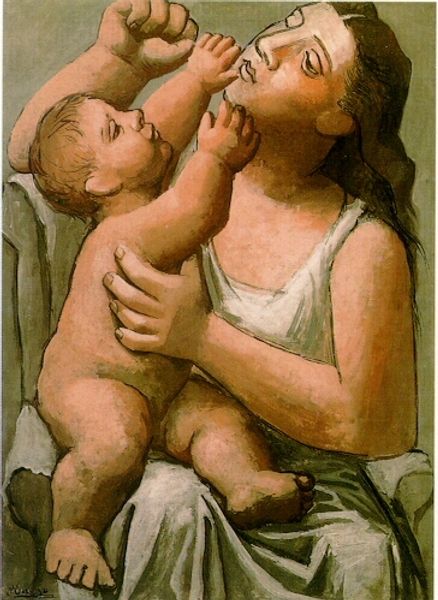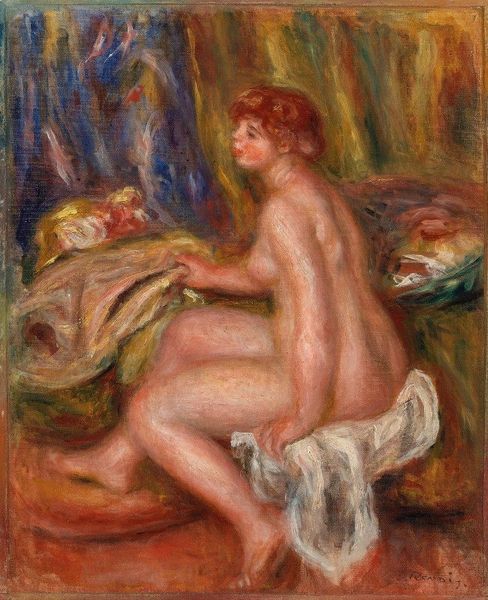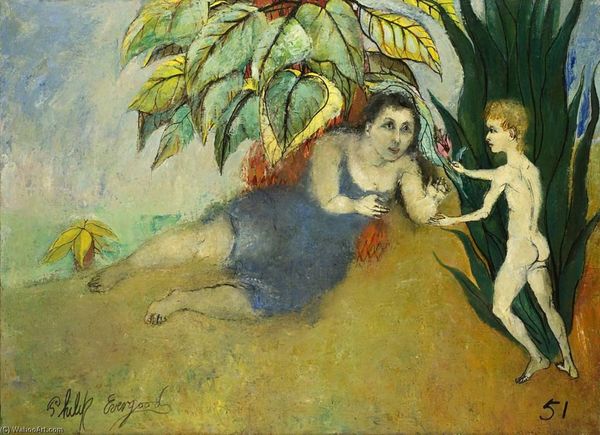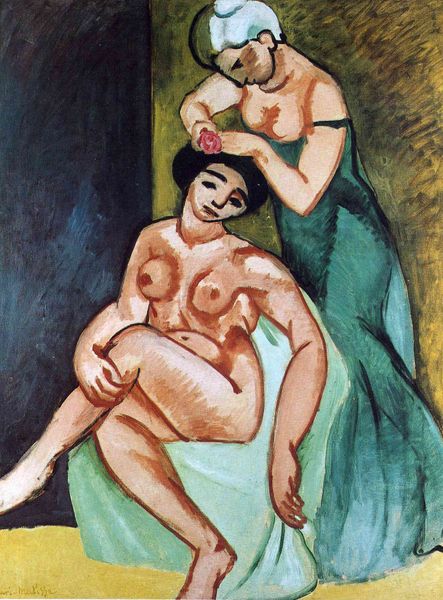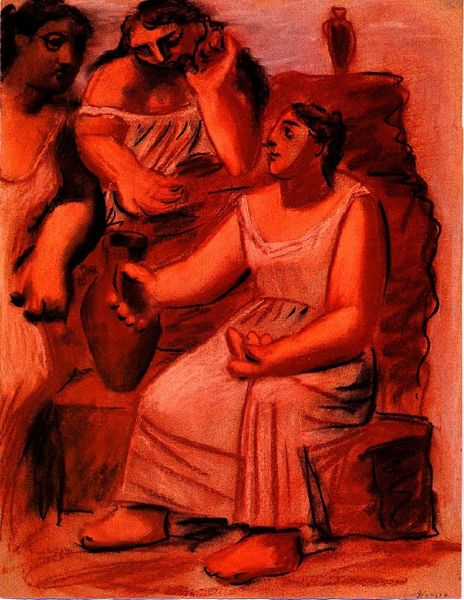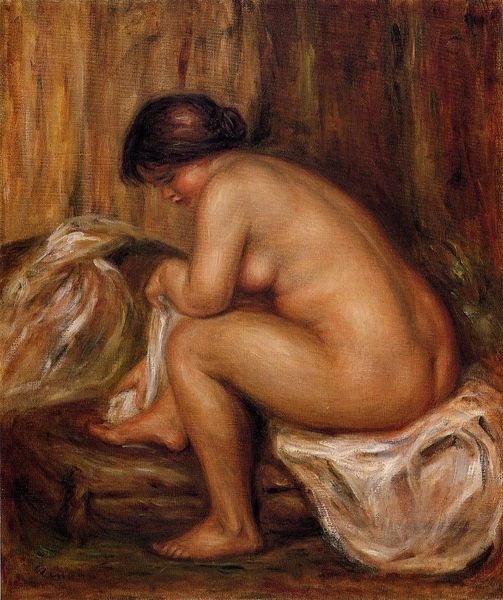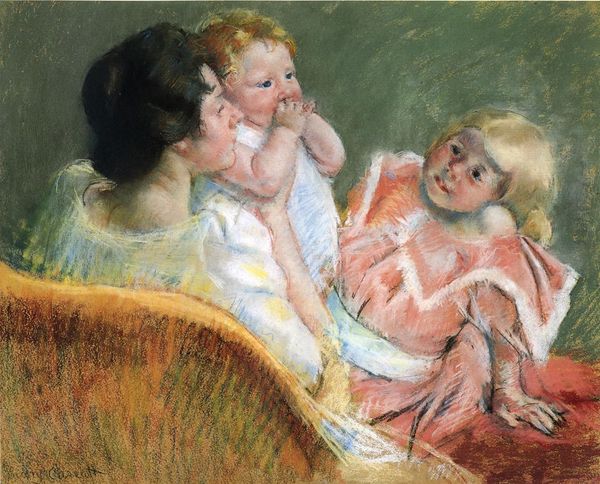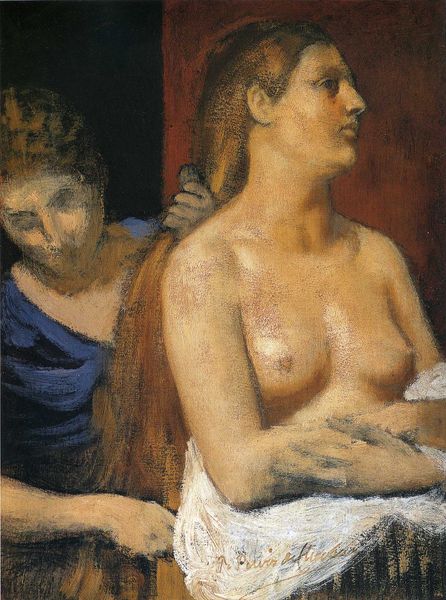
Dimensions: 104 x 75 cm
Copyright: Public domain US
Editor: We're looking at Picasso's "Family of Acrobats with Monkey" from 1905, rendered in oil paint. I'm immediately struck by the subdued color palette and the overall sense of quiet melancholy despite the circus figures. What historical or cultural factors might have influenced Picasso's creation of this painting? Curator: This work comes from Picasso's Rose Period. It’s vital to understand the social context: at the turn of the century, circus performers, like those depicted, existed on the margins of society. Museums and salons largely ignored them. Picasso, however, elevates them to a subject worthy of attention. Editor: So, he’s giving dignity to these marginalized figures by painting them? Curator: Precisely. Consider how traditional family portraits of the wealthy solidified their status. Here, Picasso does something similar for a family that likely didn't have access to such forms of representation. Note the presence of the monkey. How might that function within the narrative of the artwork? Editor: Is the monkey meant to symbolize something about the family's social position, maybe hinting at a shared sense of otherness or being viewed as outside of mainstream society? Curator: That’s insightful. It challenges conventional notions of the "family portrait." The inclusion of an animal considered 'exotic' also speaks to the prevailing societal attitudes of the time. Editor: This really reshapes my perspective, moving beyond the purely aesthetic to understanding the social statement it seems to be making. Curator: Indeed. By examining the public role of art, we can unpack not only the artist's intention but also how it reflected—and perhaps challenged—the dominant socio-political narratives of early 20th-century Europe.
Comments
No comments
Be the first to comment and join the conversation on the ultimate creative platform.




